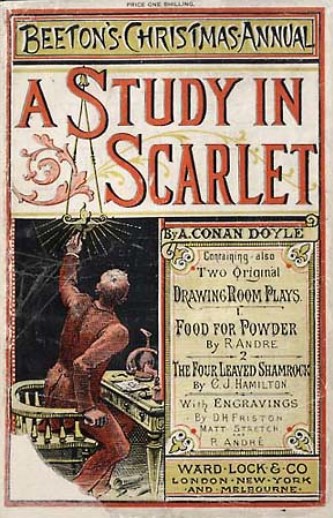
Word of the Day: Latent
Today’s word of the day, courtesy of the Word Guru, is latent. Latent is an adjective that means “present but not visible, apparent, or actualized; existing as potential but not yet developed or manifest; concealed or dormant.” Dictionary.com gives two definitions: “present but not visible, apparent, or activated; existing as potential,” and “Pathology. (of an infectious agent or disease) in a phase of being hidden or unrecognized; not yet exhibiting symptoms” (https://www.dictionary.com/browse/latent).
The word entered the English language in the “mid-15c., ‘concealed, secret,’ from Latin latentem (nominative latens) ‘lying hid, concealed, secret, unknown,’ present participle of latere ‘lie hidden, lurk, be concealed,’ from PIE *late-, suffixed form of root *lādh– ‘to be hidden’ (source also of Greek lēthē ‘forgetfulness, oblivion,’ lēthargos ‘forgetful,’ lathre ‘secretly, by stealth,’ lathrios ‘stealthy,’ lanthanein ‘to be hidden;’ Old Church Slavonic lajati‘to lie in wait for’). Meaning ‘dormant, undeveloped’ is from 1680s, originally in medicine” (https://www.etymonline.com/search?q=latent). You may recognize the word lēthē as the name of the river that the deceased were supposed to drink from; the water would cause them to forget life on Earth. You might also suspect a connection with lethargic through lēthargos, and you would be right. The idea is that people are inactive through forgetfulness (https://www.etymonline.com/search?q=lethargy).
According to On This Day, on this date in 1905 Arthur Conan Doyle published The Return of Sherlock Holmes “collection in London after public pressure to revive his famous detective” (https://www.onthisday.com/events/march/7). That makes it sound as if the publishing of the collection was the immediate response to the public’s demand for more Sherlock Holmes stories, but that would be a mistake.
Sir Arthur Conan Doyle (1859-1930) was born in Edinburgh to Irish-Catholic parents. His childhood was difficult. His father was an alcoholic who was troubled by psychiatric problems. For a time, the family was split up, with young Doyle living with a friend of the family. The family did get back together, but they lived in poverty. Fortunately, Doyle had some rich uncles who sent him away to Jesuit schools first in England and then in Austria.
Doyle studied medicine in Edinburgh in the 1870s, and then became a physician. While studying medicine and beginning the practice of it, he also started writing, both fiction and academic articles. In 1882, he set up a practice in Portsmouth, but he struggled getting patients. So to fill the time, he wrote. It was during this time that he wrote his first Sherlock Holmes story, A Study in Scarlet (1887). The character was modelled, according to Doyle, on a university professor named Joseph Bell. He wrote to Bell, “It is most certainly to you that I owe Sherlock Holmes … round the centre of deduction and inference and observation which I have heard you inculcate I have tried to build up a man” (https://en.wikipedia.org/wiki/Arthur_Conan_Doyle).
He followed A Study in Scarlet with The Sign of the Four, and then he started publishing short stories in The Strand Magazine. But he got tired of Holmes, so tired that he raised the price of a Holmes story thinking that the magazine publisher would refuse to pay it. Doyle was wrong. He even wrote to his mother saying that he wanted to kill of his famous detective. Her response was, “You won’t! You can’t! You mustn’t!” (ibid.).
But he did. In “The Final Problem” (1893), which takes place in 1891, Holmes and his archnemesis Professor Moriarty plunge to their deaths while struggling near the top of the Reichenbach Falls in Switzerland. We don’t actually see the fall. Watson goes to find Holmes and discovers signs of a struggle and a note from Holmes that he chose to fight Moriarty himself. There are footprints going to the clearing where the fight happened, but no footprints moving away from the site. Watson returns to England with enough evidence to get Moriarty’s gang sent away, and mourns the loss of his friend.
The fans were not happy.
20,000 subscribers cancelled their subscriptions to The Strand.
After an eight-year hiatus, Doyle published The Hound of the Baskervilles (1901), but the action of the novel takes place before that of “The Final Problem.” Finally, in 1903, Doyle published “The Adventure of the Empty House,” a story which takes place in 1894. In the story, Holmes explains that he fakes his death in order to fool his enemies. Indeed, at the end of “The Empty House,” the murderer tries to kill Holmes, but Holmes has set him up by creating a dummy of himself.
Doyle continued to write short stories with his detective, and Sherlock Holmes has become the most popular detective in the most popular genre of fiction. The stories have been adapted into plays and movies, and new stories starring Sherlock Holmes have been created. During World War II, Universal Studies produced a series of films with Basil Rathbone as Sherlock Holmes that had Holmes fighting the Nazis.
The reason Arthur Conan Doyle wanted to kill off Sherlock Holmes was, he said, to do more important things. Among those more important things were historical novels. Doyle was unaware of the latent potential in his detective character, the enormous influence Sherlock Holmes would have on the detective story in particular and literature in general. But how could he have known?
The image today is of “A Study in Scarlet in Beeton’s Christmas Annual, by Arthur Conan Doyle. London: Ward, Lock [1887]. This first appearance of Sherlock Holmes in print is one of the rarest items in the [Toronto] Library’s collection” (Digital Rights: Copyright Toronto Public Library).